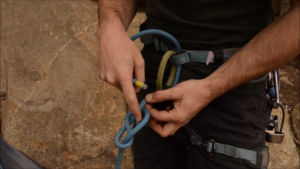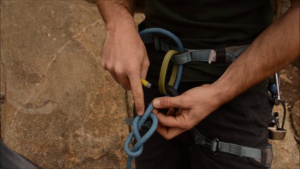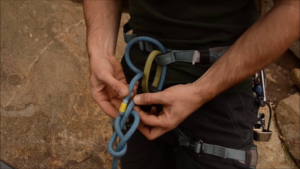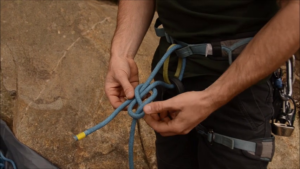Top rope climbing San Diego
Top Rope climbing San Diego.
Top rope climbing San Diego. TR is the most basic form of roped climbing. TR indicates that there is always an anchor above the climber. The rope runs through the anchor at the top of the climb and thus provides maximum safety for the climber. When using a TR it is the belayer’s responsibility to maintain light tension on the climber at all times. Tension guarantees that a slipping or resting climber will be stopped right where the slip happens or rest gets initiated – without falling. In order to safely use a TR setup (as often used in rock gyms) there are two skills required. 1. Tying a figure 8 knot follow through. 2. Belaying.

Tying a figure eight not follow through. This is a very basic skill in top rope rock climbing San Diego. The figure eight knot follow through is the most common used knot for attaching the climber to the rope. It is fairly simple to tie, holds a heavy load and is easy to visually inspect when tied correctly.

There are three criteria that make up a nice and neat knot – useful for top rope climbing San Diego
• The actual knot shall be dressed and tightened (no crossing of individual strands)
• The loop between knot and both tie in points of the harness shall be no larger than a fist.
• The tail end exiting the figure eight knot shall be no shorter than two stacked fists and no longer than four fists.
It is quite a challenge to tie a figure eight knot follow through that lives up to the above mentioned 3 criteria. Here are three tips that help you to get better at tying nice and neat figure 8 follow through knots:
1. Be quick with adjusting the tail end of your first single figure 8 knot. Eventually you can adjust the length (shorter or longer) even after having fiddled the tail end through both tie in points. Once you get good at adjusting the length, you will create tight loops (smaller than a fist) and tail ends between 2 and 4 fist length
2. Push the rope aside and follow the tight side of the rope (see pictures)
3. Loosely follow the entire knot before tightening each of the 4 individual strands at the very end






